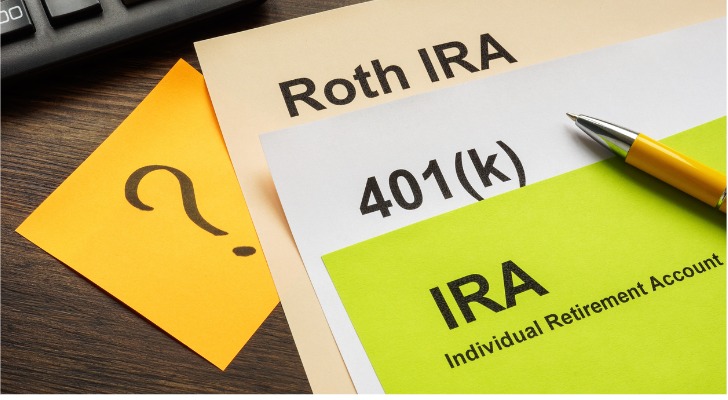
Where you keep your money matters.
When it comes to retirement taxes, there are two main issues to consider: account type and asset class. Account type is where you keep your investments, such as an IRA, a 401(k) or a taxable account. Asset class refers to the type of investments you own, like stocks and bonds. Together, these two categories define how and when you pay taxes on your retirement savings.
A financial advisor can help you save and plan for retirement. Talk to a fiduciary advisor today.
Minimizing taxes by keeping the right asset class in the right account is called “asset location.” As Vanguard recently found, using this strategy can help a retiree with $1 million save $2,500 per year in taxes.
What Is Asset Location?
Asset location is the practice of matching your retirement investments with the accounts that offer the best tax treatment for the individual asset.
For most investors, accounts come in three general types:
- Pre-tax: Tax-advantaged retirement accounts in which you pay no taxes on the contributions, such as a 401(k) or traditional IRA
- After-tax: Tax-advantaged retirement accounts, such as a Roth IRA or Roth 401(k), in which you pay no taxes on withdrawals
- Taxable: Standard brokerage accounts that receive no special tax treatment
At the same time, the returns that investments generate are typically treated either as capital gains or ordinary income. While ordinary income tax rates can reach upwards of 35%, long-term capital gains rates top out at 20%, giving these assets a more favorable tax treatment than earned income.
In some cases, a single asset can trigger both tax categories. For example, with long-term dividend stocks the IRS taxes dividend payments as ordinary income and the sale of the shares as capital gains.
With asset location, the investor tries to get the best tax advantages by putting a given investment in the account that offers the best tax treatment for it. Jeremy L. Suschak, a financial advisor and certified financial planner (CFP) at DBR & Co in Pittsburgh, told SmartAsset it’s typically advisable to keep less tax-efficient assets, including most fixed-income securities, in tax-advantaged accounts like traditional IRAs (pre-tax). Since these assets generate interest that’s taxed as ordinary income – rather than capital gains – deferring those taxes for when you’re in a lower tax bracket may be optimal.
“Conversely,” he said, “investments such as passive equity funds are tax efficient since most of the return comes from appreciation, which is taxed at the capital gains rate. When it comes time to draw on the accounts to meet spending needs, keep in mind the tax consequences of the account you’re drawing from and evaluate those consequences in the context of your long-term goals for each account specifically.”
How Do You Use Asset Location?
Vanguard’s Mark Vandenburg Jr. wrote “In its simplest form asset location is sometimes explained as ‘bonds in traditional, stocks in taxable.’ That’s because the majority of income from stock investments is usually taxed at more favorable dividend and capital gains rates.”
In a nutshell, you try to put your highest-tax assets into the lowest-tax accounts, rather than distributing them evenly or at random.
For example, take an investor with $1 million in savings – $500,000 in stocks and $500,000 in bonds – across a 401(k), Roth IRA and taxable account. The bond interest is taxed at the higher ordinary income tax rate, while any stock sales will be taxed at the lower long-term capital gains rate.
Using asset location, the investor would focus on tax treatment and distribute his assets by:
- Filling his 401(k) with bonds, as they are taxed at the highest rate;
- Putting all remaining bonds in the Roth IRA and then filling the rest of the account with stocks;
- Putting all remaining stocks in the fully taxable account, since they are taxed at the lowest rate.
Is Asset Location Helpful?

Asset location tends to generate value for high net-worth investors.
As Vanguard found, asset location can boost a hypothetical account’s after-tax returns by between 0.05% and 0.3% per year. The firm found that the hypothetical investor in the example above would save $2,500 per year and $74,000 over a 30-year period.
However, asset location likely only matters for investors who have multiple tax-advantaged and taxable accounts holding several asset classes. If you only have a 401(k) and index fund shares, asset location isn’t an option or necessary.
The upshot is that asset location can lead to some modest tax savings for high-value retirement accounts. If you have a lot of money in retirement savings, and if you have several different account types, then it’s worth thinking about how to properly distribute your investments.
Bottom Line
Asset allocation is a tax management strategy for retirement accounts. It’s the practice of putting your retirement investments in the account that will maximize tax savings, based on any given asset and account’s tax treatment. For the right investor, it can provide modest, but real, tax savings.
Retirement Tax Tips
- Many people don’t really think about taxes in their retirement, but it’s very important to do so. You will keep paying taxes, and unless you plan for that it can take a big bite out of your savings. Here are five ways to reduce taxes in retirement.
- Get retirement planning and investing tips Tuesdays through Fridays with the SmartMoney Minute newsletter. It’s 100% free and you can unsubscribe at any time. Sign up today.
- A financial advisor can help you plan for taxes in retirement. Finding a financial advisor doesn’t have to be hard. SmartAsset’s free tool matches you with up to three vetted financial advisors who serve your area, and you can have a free introductory call with your advisor matches to decide which one you feel is right for you. If you’re ready to find an advisor who can help you achieve your financial goals, get started now.
Photo credit: ©iStock.com/designer491, ©iStock.com/Pekic, ©iStock.com/AscentXmedia